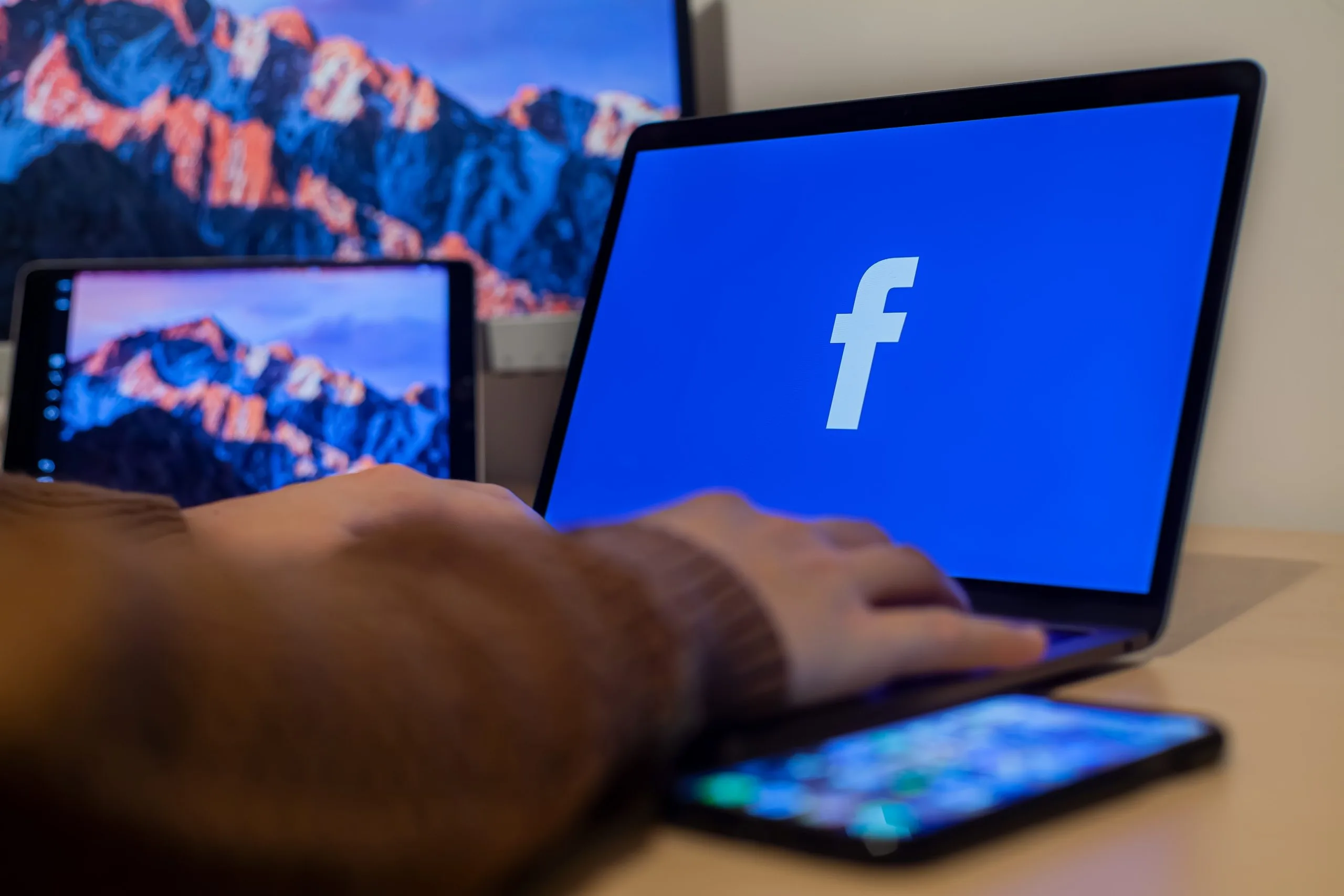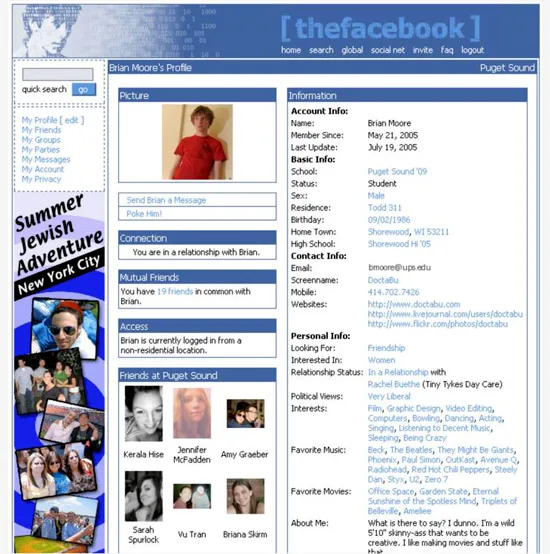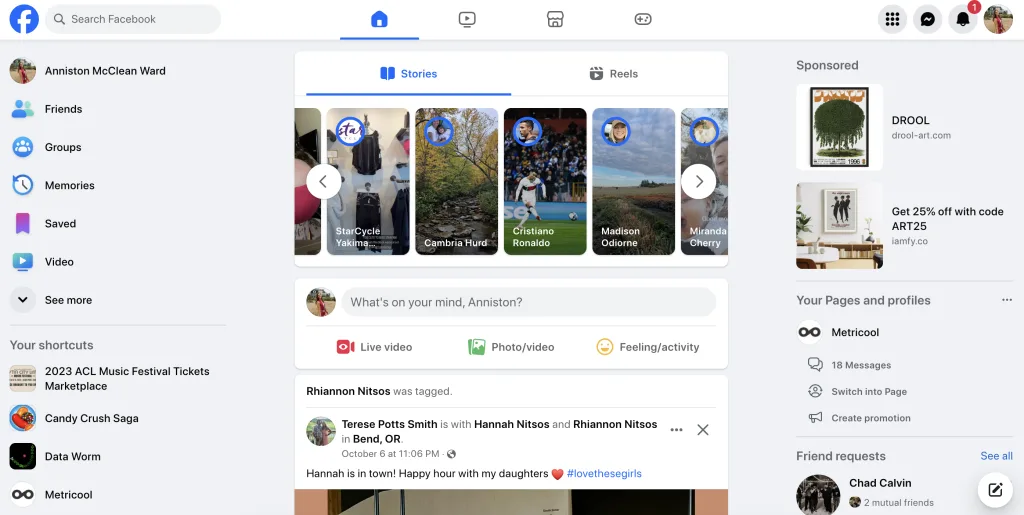The History of Facebook: Timeline of the Network

Facebook is the most important social media network in the world, at least in terms of users, which is close to 3 million registered users. But, what is the history of Facebook and how has the network changed over the years? In this post, we will break down the history of Facebook, including feature releases, partnerships, and news throughout the years.
What has happened since the first version of Facebook in 2004, to today’s most recent version? Find out below.


2023
Meta Verified arrives
In response to the start of Twitter Blue, Meta launched their own subscription program, Meta Verified, first for content creators and later for business accounts. By paying for this plan, you automatically receive the blue check on your profile, among other advantages that challenges the nature of social network popularity.
Facebook in 2021
The Facebook Metaverse is born
Just when it seemed like Facebook was going to have a quiet end to the year, Mark Zuckerberg took everyone by surprise with his announcement of Meta, the new brand that would encompass all Facebook apps. Unleashing the Metaverse was huge news, but has not taken off as Zuckerberg had hoped.
Reels on Facebook
A few months after appearing on Instagram, Reels arrive to Facebook as well, after Zuckerberg made sure it was a successful feature among users. As of now, it seems that Instagram Reels have done better than Facebook Reels, however both respectfully insist on reaching new users.
Facebook in 2020
Live shopping
The popularity of live videos continued to increase, so Facebook decided to test out Live Shopping, allowing users to make purchases directly from Live videos on the platform. However, in October of 2022, Facebook decided to eliminate this feature altogether.
Games on Facebook?
The truth is, no, there aren’t games on Facebook. However, let’s talk about what happened. Facebook Gaming landed in 2020, with the aim of connecting creators and video game fans on the platform. Yet, this experiment ended in 2022, when this program was eliminated.
Facebook Business Suite
In 2020, Facebook prepared the launch of Business Suite, a tool to manage all marketing and ad actions in one place. This would later turn into Meta Business Suite, where users can connect both Facebook and Instagram.
Purchase of GIPHY
The third bombshell from the platform. In 2020, Facebook announced the purchase of the largest GIF creation platform, GIPHY. The goal with this was to improve GIF searches in both comments and private messages on Instagram.
United in a single app
If there was any doubt that Facebook and Instagram were more than just social media networks, this was disproved when Facebook decided to bring Messenger to and the Post Center of both platforms together. This allowed for enhanced manageability of accounts and private messaging for brand pages.
Facebook in 2017
A 360 on Facebook
The app launched the Faceook 360 feature so that users could share content in this type of format. Facebook had high hopes for 360, however it has not been able to meet expectations.
Stories arrive
Just a year after launching Stories on Instagram, this content appeared as Facebook Stories with the same characteristics: Images or short-form videos that last for 24-hours on the platform, with the option to add stickers and other elements to encourage user interaction.
Facebook in 2016
Facebook Live is born
Live broadcasts were starting to take center stage in online entertainment. Facebook, no stranger to the success of YouTube and Twitch, launched Facebook Live, a feature where users could broadcast live directly from the platform.
The “like” revolution
Do you remember how long it feels since the first “likes” on Facebook? Mark Zuckerberg’s social network wanted to add variety to this feature by incorporating reactions to posts and comments, allocating different emojis for each reaction. However, it would be a year later that this feature finally arrived.
Facebook in 2015
Last to arrive, GIFs
Now that GIFs have become a huge success in the way users communicate on social networks, it’s worth noting that it was Facebook who dared to include GIFs. In 2015, GIFs became available in both comments and on the main Facebook wall feed.
The Facebook algorithm
Facebook continued to work on improving user experiences with its algorithm. Over the years it has changed to reach what we know today, where the user more or less has the option to choose what they want to see, while the social network recommends similar content.
Facebook in 2014
The second bombshell
Facebook announced the purchase of WhatsApp, the most prominent instant messaging application. In the long run, Instagram has become more popular, however, this was a bombshell considering WhatsApp was already an established app.
Facebook in 2013
Let’s edit!
Editing posts after they are already posted is a not feature that took users by surprise, but it was one that was very uncommon. In 2013, Facebook allowed users to edit their posts and comments after they were published.
Another form of communication: Stickers
If emojis were a huge novelty in expressing thoughts and emotions on Facebook, stickers came with an even more creative touch. However, it wasn’t a universal launch. First, iOS users had the luck to try it, and then it reached the web version later.
Emphasis on emojis
With the arrival of instant messaging apps, emojis were already established in daily digital conversations. Yet it wasn’t until 2013 that Facebook allowed users the option to add emojis to their status updates.
Facebook in 2012
The first bombshell on Facebook
In 2012, there was a social network quickly attracting a lot of attention, and it wasn’t Twitter. With its unique image and filter characteristics, Instagram was the hottest commodity on the market. And after just two years, Facebook decided to buy Instagram into one of the most iconic partnerships.
Facebook in 2011
iOS covers the entire market
As Facebook’s app was already being widely downloaded on iPhones, in the same year that Facebook incorporated Messenger into the app, it arrived on the iPad. Having this in tablet format would mean a redesign of the app. This was the second edition of the iOS version.
Facebook joins Skype
As we will see below, this isn’t the first acquisition or integration, but this is certainly one of the first that raised the most attention. Facebook and Skype joined forces to incorporate video calling, which was likely a response to Google and Google+.
Mobile devices have a tailwind
Just a few years after the Facebook app launched, Facebook Messenger landed on iOS and Android devices. In addition, another update to this app allowed the download to Blackberry devices.
Facebook in 2010
Tell a little more about yourself
One of Facebook’s goals was to share more data amongst users. This is how the biography section appeared on the network, causing a redesign of the interface to allow users to tell more about themselves: information, educational background, work experience, etc.
The story of Facebook, the movie
David Fincher was the director in charge of creating a movie about the history of Facebook. With Jesse Eisenberg in the role of Mark Zuckerberg, the movie became a huge hit. However, the Facebook CEO stated that the story in the film is not entirely accurate.
Facebook in 2009
New tags
Already becoming an authentic revolution was the inclusion of tagging other users in photos. Facebook wanted to take tags to a new level in 2009 when launching the option to tag or mention users in their status updates or comments.
First interaction
After two years of silence, Facebook turned social networks on their heads when they created a new form of interaction between users. The “like” button arrived, which would leave comments on other networks, such as Fotolog, in oblivion.
Facebook in 2007
First appearance of pages
At the same time that Mark Zuckerberg announced the arrival of the Facebook Ads platform, pages also came to life. This tool would eventually become an essential element for ads, but also for every other aspect of businesses on Facebook.
Facebook advertising arrives
In 2007, Facebook was still a pioneer in many aspects, among them being the beginning of advertising. When Mark Zuckerberg announced the arrival of ads to this platform, brands and companies were given the tools to connect with users and specifically find their target audience and customers.
Developers are ecstatic
Facebook’s expansion is already becoming unstoppable and the social network is looking for new horizons. At the beginning of 2007, it launched the ‘Facebook Platform’, an app for developers to create other applications and continue to improve the social network.
The first version of the mobile app
Smartphones were beginning to appear in our lives and social networks were not shy of new technologies. Facebook announced the arrival of Facebook Mobile and its supporting components in January 2007. This first version would be updated many times over the years.
Facebook in 2006
The first feed in history
Facebook seemed like it had it all, at first glance. However, what was missing was to stay up-to-date with your friends on the app. Thus, NewsFeed was born, the first Facebook feed to see what your friends post to the app. This was sorted by Facebook’s algorithm and updated with each new post. This very well could have been the first version of Facebook’s algorithm.
A major facelift
Now having more of its footing, the Facebook team decided to add a twist to the design of its interface. An interface that was already becoming somewhat outdated and had several similarities to MySpace. This facelift sought to give more prominence to other elements, such as profile pictures. Facebook’s goal was to stand out from other networks.
Facebook in 2005
Tagging is what it’s all about
It seems unthinkable now, but there once was a time when tags and mentions weren’t an option. However, in the winter of 2005, Facebook announced the possibility of tagging other users in photos. Facebook pioneered this feature, and it was later brought to Instagram, Twitter, TikTok, etc.
Photos arrive
At a time when Fotolog was the main protagonist of social networks, it was crucial to have image sharing as an option. Thus, in 2005, Facebook added the image format option, where users could post endless photos.
Goodbye to ‘The’, hello Facebook
In the middle of its expansion into Mexico, New Zealand, and some European counties, the network decided to remove the ‘The’ from its name, becoming the famous network we know today. Facebook was officially born.
Facebook in 2004
An idea is born
In 2004, social networks began to emerge as a simple platform to entertain and connect with other users from all over the world. Mark Zuckerberg, along with three other university classmates, launched the first draft of “The Facebook.”
This is the history of Facebook from the start of the idea in 2004, to what we know Facebook, Instagram, an Meta to be today. We are almost approaching Facebook’s 20th anniversary, which puts into perspective how quickly our digital world has changed, and what technologies have emerged since.
What are your thoughts? Let us know in the comments below!
Facebook has without a doubt become one of the most prominent social networks for brands and businesses to grow their presence and market their products and services. Did you know that with Metricool you can manage your professional Facebook pages in one place? Schedule content, reply to messages and comments, and view in-depth analytics. Learn more about what you can do with Facebook and Metricool below!

